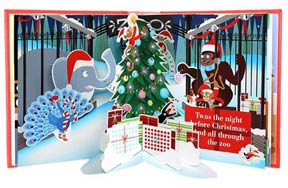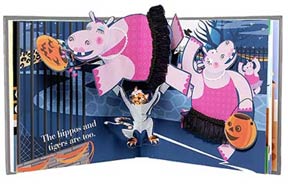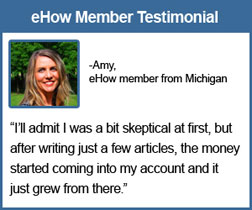Children's Market: Jumping Jack Press Pop-Up Books

I mentioned this market in our August issue of Premium-Green (where we give first calls), but I thought I'd share it with you all since it's a great one!
Ever since I was a kid, I've been a big fan of pop-up books. They are always so visual, and a great interactive way to introduce children to reading. They weren't always for children though. According to Wikipedia, the audience for early movable books were adults. It is believed that the first use of movable mechanics appeared in a manuscript for an astrological book in 1306. The Catalan mystic and poet Ramon Llull used a revolving disc to illustrate his theories. Throughout centuries they have been used for such diverse purposes as teaching anatomy, making astronomical predictions, creating secret code, and telling fortunes. It was not until the eighteenth century that the techniques used in pop-ups were applied to books designed for entertainment, particularly for children. And kids love 'em!
 In researching markets for Premium-Green, I wrote the creative director, Monika Brandrup, at Up With Paper and asked for their submission guidelines for their greeting card line. I was disappointed to find they didn't accept freelance writers for their cards, but she told me that their new book division, Jumping Jack Press, was always looking for story ideas for their pop-up book line.
In researching markets for Premium-Green, I wrote the creative director, Monika Brandrup, at Up With Paper and asked for their submission guidelines for their greeting card line. I was disappointed to find they didn't accept freelance writers for their cards, but she told me that their new book division, Jumping Jack Press, was always looking for story ideas for their pop-up book line.Monika said, "We are always on the lookout for great story ideas. We pay a flat fee for writing our books that averages around $1,200 for an 8-page book. If anyone is interested in submitting concepts and ideas, they may email them directly to me."
So there you have it! Check out Jumping Jack Press: www.jumpingjackpress.com to get an idea of the books they publish before you query. They are absolutely gorgeous! Then send an email to Monika Brandrup: monikab[at]upwithpaper[dot]com.
Labels: children's book publisher, Jumping Jack Press, pop-up books, writer's market













